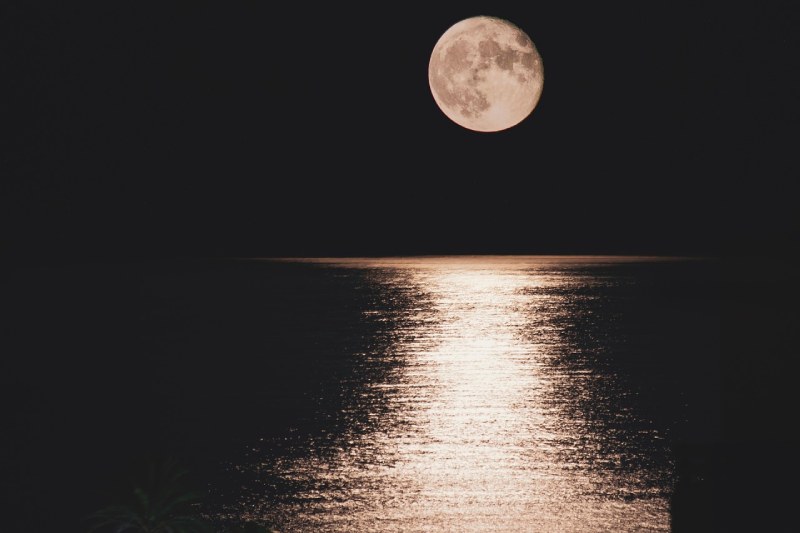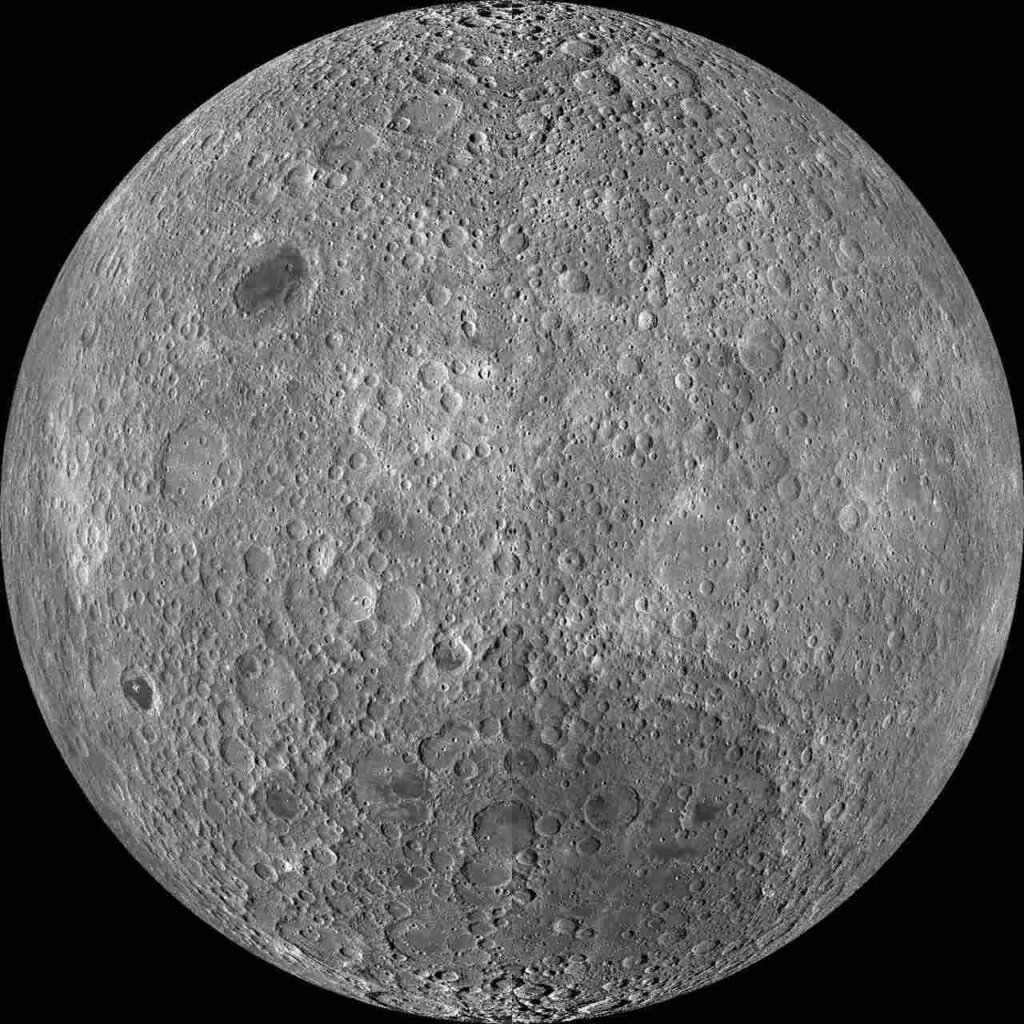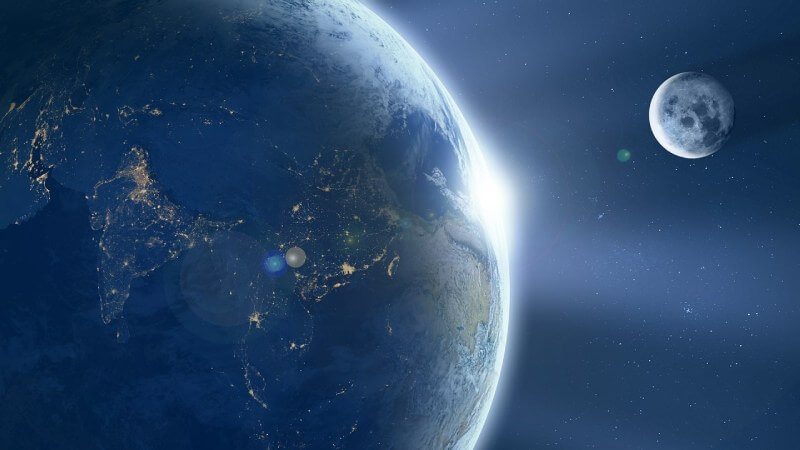Did you know that we only see one side of the Moon? The far side of the Moon was only seen after pictures were taken by an orbiting satellite.
We only see the same side of the Moon because of Tidal Locking. Tidal Locking occurs because of the Moon’s gravitational interaction with Earth over a long period of time.
The Moon’s History
A leading scientific hypothesis suggests that the Moon was formed by a giant impact, an impact that has been named the “Theia Impact.” The theory states that the Moon was formed approximately 4.6 billion years ago due to a collision between a large protoplanet called “Theia.”
The hypothesis explains the process of the formation of the Moon:
- The Early Stages: In the early stages of the Solar System, many protoplanets and other objects were orbiting around the sun.
- Collision: A large protoplanet (the size of Mars) named Theia, collided with the Earth which caused pieces of Earth and Theia to break off.
- Orbiting Debris: The pieces started orbiting around the Earth.
- Formation of the Moon: Over time, the debris started to come together and form the Moon.
The theory is backed up by scientific evidence that some of Earth’s surface has been found on the Moon. The findings suggest that the Moon is made up of some of the Earth’s surface.
The Development of Moon’s Orbit
The moment that the Moon was formed (4.6 billion years ago) the Moon started orbiting young Earth. Due to the Earth’s gravitational pull, the Moon was orbiting around the Earth while trying to acquire its size. Once the Moon was formed, it started to play a role in the Earth’s ocean – causing tides.

In the beginning, both the Earth and the Moon were orbiting at their own pace but over time they became synchronized in what is known as being “tidally locked.” Being tidally locked means that the same side of the Moon is always facing toward us.
Synchronization Due to Tidal Pulling
Initially, the Moon rotated quicker than it does today. However, due to tidal pulling, the Moon slowed down. With the gravitational forces of the Earth, the Moon’s rotational energy gradually reduced. The Moon moved slightly away from the Earth. As a result, the Moon’s rotation rate (rotating on its axis) decreased while the orbital period (rotation around the Earth) increased.
The process continued until the Moon’s rotational period matched its orbital period. Once this occurred, it reached “tidal locking” and is now almost perfectly synchronized with the Earth. Now, the same side of the Moon is always facing toward the Earth because of our synchronization.
What Would it Take to See the Far Side?
Currently, it takes the Moon 27 days to rotate on its own axis while it takes 27.3 days to orbit around the Earth. It is rotating on its own axis and around the Earth at the same speed which causes us to only see one side of the Moon. Well, 59% of the Moon.
We could see the other side of the Moon if the Moon was not rotating on its axis, or if the Moon rotated around the Earth in 13.5 days. That means it would be making 2 rotations while circling the Earth.
Since neither of these scenarios is the case, we have to resort to technological advances to see the far side of the Moon.
What We Know About the Far Side
The first time that scientists were able to see the far side of the Moon was in October 1959 during a Soviet Luna 3 mission. This was the first time humans were able to photograph the other side of the Moon.

Since 1959, we have had various lunar missions that have orbited the Moon to capture images of the far side and these missions have significantly increased our understanding of the Moon’s geology.
Here’s what we have learned:
● Geology: The other side of the Moon has experienced more impacts than the near side of the Moon. It has more dense craters.
● Thickness of Crust: The Moon’s gravity field shows that the crust on the far side is thicker than the near side.
● Moon Phases: The far side of the Moon goes through the same phases as the near side of the Moon.
● Dark Side: There is actually no such thing as the dark side of the Moon. The far side of the Moon is just as bright as the near side.
Chang’e 4 Mission
Over the years, many companies around the world have created programs that allow them to explore the Moon’s surface. One of the most popular missions was Chang’e 4.
Chang’e 4 (China) launched on December 8, 2018, and was the first mission to successfully land a spacecraft on the far side of the Moon. It carried a rover that explored the Moon’s surface
Future Explorations
NASA plans on setting up a sustainable community on the Moon’s surface during their Artemis Initiative. This allows astronauts to spend extended periods of time exploring the Moon. With the future looking at long-term astronauts, it appears that exploring the other side of the Moon is becoming more of a reality. Currently, no man has stepped foot on the far side.
Conclusion
We will not ever be able to see the far side of the Moon from Earth. Earth and Moon have been synchronized for millions of years causing the Moon to continuously show us the same side of the Moon.
Scientists are trying to continue to study the far side of the Moon to learn more about its geology. Many notable missions have occurred to find out more about the side we just can’t see. We have learned that there are many similarities between the sides but several differences.
NASA, Space X, and other private institutions around the world are creating space programs and missions to learn more about the Moon. NASA is even planning an initiative where they send astronauts up to the Moon for months at a time to study the Moon further.

